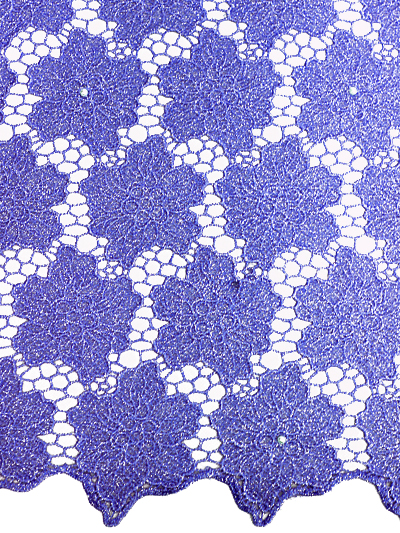Guipure is a particularly interesting type of lace, as it’s made in such a way that the motifs are stable and therefore can be cut quite easily. Because of this design, rather than simply sewing a straight seam, the technique of applique seaming can be used.
This means that matching, trimming and stitching the motifs together is possible. Thanks to this option, guipure lace is often used in couture garments. This enables the seamstress to move the lace to accommodate curves along the side seams and when stitching darts.
 Planning is the key
Planning is the key
If you’re planning on making a garment using guipure lace, careful planning is the key to a successful finish. First, you must decide which features you wish to highlight, such as the scallops along the edge of the hem, for example. Then, you need to arrange the material to accommodate the features.
It may be necessary to buy extra material to have sufficient scallops, so take the time to work out the features you require. Another tip, when stitching in the zip, is to make sure you have sufficient material to cover it with a flap so that it will be invisible. This may take extra time so that you can work out how best to cut the motifs to cover the zip, but it’s well worth the effort.
 Constructing the garment
Constructing the garment
Make sure you match the lace along the side seams before you cut the material so that the motifs are lined up properly. When sewing seams, you can use your sewing machine on guipure lace, as it doesn’t need to be hand-stitched.
If you’re just starting to work with guipure lace, it’s advisable to stick to simple patterns first. Don’t tackle anything too complicated and, instead, make a simple skirt, for example, so that you can focus on learning how to work with guipure. Once you’ve learned the basic techniques, you will have the confidence to tackle more complex garments.
More unusual items, such as a trench coat, for example, can look particularly stunning when made from guipure lace. Remember that practice makes perfect and once you master the specific techniques, there’s no end to the type of unique items that you can sew.




 Tel : +8613635276569
Tel : +8613635276569 Email : sales@chinalacetrim.com
Email : sales@chinalacetrim.com Skype : chinalacetrim
Skype : chinalacetrim







